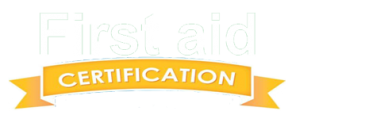With the countless number of people who suffer from “stroke” every year, this colloquial term for cerebrovascular accident has become a household word. A stroke or brain attack results from the sudden cut-off of blood supply to certain part of the brain. If blood flow to the brain is cut, even for a few seconds, it can have profound effects on the brain cells, causing hosts of health problems.
Many people think that stroke involves a dramatic turn of events that is accompanies by obvious symptoms, such as weakness or numbness on one side of the body, vision problems, difficulty walking, trouble speaking and loss or changes in consciousness. But the truth is that strokes can happen silently. They can even pass completely unnoticed. While these disruptions in the brain function do not often result in obvious symptoms and require emergency treatment, ‘silent stokes’ can have lasting and significant effects on fragile brain tissues and memory.
Important Disclaimer: the material posted on this Blog on silent strokes is for information and learning purposes only. To learn how to manage and recognize strokes enrol in St Mark James first aid and CPR training (more information) with a provider near you.
Typical stroke vs. silent stroke
During a cerebrovascular accident or typical ischemic stroke, blood supply to a certain part of the brain is cut off. Lack of blood and oxygen supply can cause the area to malfunction and eventually die. The resulting  symptoms are often confined to the bodily functions that are controlled by the affected part of the brain. A haemorrhagic stroke results from the bursting of blood vessels to the brain and is usually serious. Both of these types of strokes are accompanied by overt symptoms and require immediate first aid treatment.
symptoms are often confined to the bodily functions that are controlled by the affected part of the brain. A haemorrhagic stroke results from the bursting of blood vessels to the brain and is usually serious. Both of these types of strokes are accompanied by overt symptoms and require immediate first aid treatment.
On the other hand, a silent stroke often affects blood flow in certain parts of the brain that do not control vital bodily functions. Since this type of stroke causes no obvious symptoms, many people who have had it may not even know they occurred. Although silent strokes do not present any urgent problem, the damages caused are often revealed in diagnostic tests such as MRI and CT scan. These changes in the brain can cause memory problems over time, especially if silent strokes happen frequently.
Repeated episodes of silent strokes can cause more brain damage or injury. So it is important to be proactive when it comes to stroke prevention.
How can you prevent silent strokes?
People should aware about the debilitating health effects of silent strokes and how they can be effectively prevented. One way of preventing silent strokes is to manage risk factors that include smoking, lack of exercise, high blood pressure, cholesterol, and atrial fibrillation.
Here are some very helpful ways on how to prevent and deal with risk of stroke, both silent and typical.
- Manage your blood pressure
- Limit salt intake to 1 teaspoon per day
- Monitor cholesterol levels: total cholesterol should be less than 200 mg/dL and LDL cholesterol should be 100 mg/dL
- Don’t smoke
- Keep your body weight within recommended range for your age and height
- Increase fruits and vegetables
- Exercise regularly (at least five days a week)
By preventing stroke, you can avoid potentially life-threatening emergency situations.
Learn More
To learn more about stroke prevention, management and recognition enrol in a St Mark James first aid course today (find a course).
